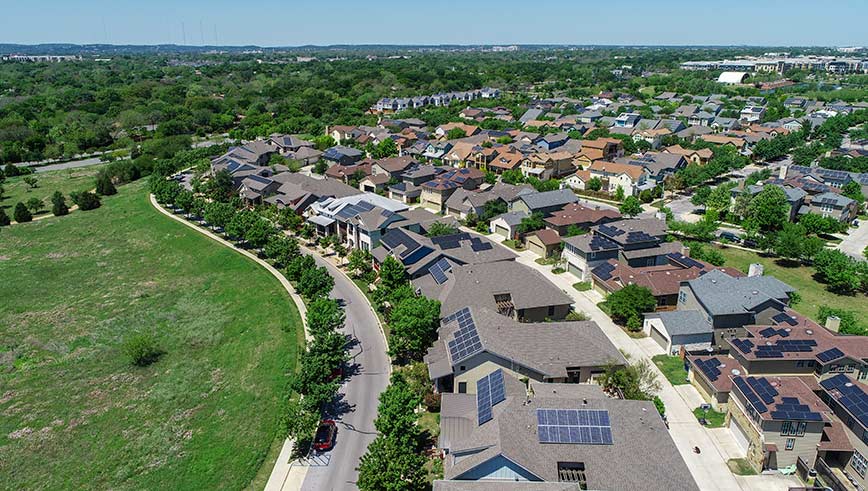The scale of Australia’s rooftop solar revolution has been brought into sharp relief again this week, with the passing of yet another remarkable milestone: more than 3 million systems installed nationwide.
The impressive new achievement, notched up despite two years of Covid-19 market disprutions, was celebrated on Tuesday by key representatives of the industry as at least one way in which Australia is leading the world in the shift to zero emissions – a shift led by ordinary households.
It comes as federal energy minister Angus Taylor departs international climate talks in Glasgow, where Australia has achieved little more than three “fossil of the day” awards – a honour reserved for those countries seen to be “doing the most to do the least.”
But not at a household level. Just last week, Australia was recognised as the country with the most solar per capita in the world – nearly 1kW of panels for every one person – after a smashing year of uptake in 2020 pushed the total installed on the nation’s rooftops to 13GW and rising.
The PV in Australia Report for 2020, published as part of the International Energy Agency PV Power Systems analysis, detailed a record-breaking year for rooftop solar, with total of 370,000 new systems installed on homes and businesses, and no sign of this trend slowing down.
It is also having a significant impact on the operations of the grid, sending “minimum operational demand” to record lows in multiple states, and to negative territory in the local distribution network in South Australia. It’s also sending daytime prices for wholesale electricity to record lows, and often below zero.
“The transformation of Australia’s carbon-intensive electricity supply has been led by households directly investing in solar power on their homes. Not just because it benefits the planet – because it makes financial sense to do so,” said SunWiz managing director Warwick Johnston on Tuesday, in comments on the “remarkable” new milestone.
“Thanks to Australia’s highly-efficient solar workforce, Australia is one of the lowest-cost countries for a rooftop installation. Our abundant sunshine, large homes and high electricity prices combine to make paybacks in Australia shorter than in most other countries.”
Clean Energy Council chief Kane Thornton said rooftop solar had played a key role in keeping Australia’s economy moving through the Covid-19 pandemic – not least in the creation of jobs.
“For every megawatt of new rooftop solar, six jobs are created each year, illustrating that it is the largest generator of employment in the renewable energy industry,” Thornton said.
“These are skilled workers, employed by small- to medium-sized businesses that are critical to local economies right across Australia.”
Meanwhile, the “sheer scale” and speed of installations – more than 41 solar systems every hour nationwide, equating to one panel every 44 seconds – was driving a cracking pace of change in Australia’s electricity market, Thornton said, that has seen rooftop solar account for 38 per cent of NEM demand, all on its own.
In South Australia, where rooftop solar output sent the entire local network into negative load for four hours the weekend before last, grid operator SA Power Networks says it expects to see the whole state’s energy needs regularly being supplied 100% from rooftop solar sometime very soon.
“Having more than 3 million rooftop solar systems now installed is a transformational change as Australians take control of their energy bills, do their bit to tackle the impact of global warming and support small business,” said Thornton – adding that it would be critical to Australia achieving a target of net-zero emissions by 2050.
“So far, it’s everyday people that have done the heavy lifting on carbon emissions reduction, while the Australian government has been dragging its feet,” added Solar Citizens national director Ellen Roberts on Tuesday.
“Luckily, the progress we’ve made together will make it easier to slash carbon pollution in other sectors, like transport and heavy industry.
“As we transition to a cleaner economy, having abundant cheap energy during the day is a valuable resource that we can use to power electric vehicles, charge up community batteries and underpin new onshore manufacturing industries.
“Because of the hard work of Australians, we’re in a good starting position to become a clean energy superpower that can export our sunshine to the world.”










